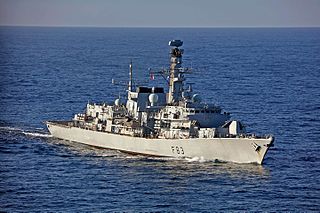
HMS St Albans is a Type 23 frigate of the Royal Navy. She is the sixth ship to bear the name and is the sixteenth and final ship in the 'Duke' class of frigates. She is based in Devonport, Plymouth.

The first HMS Shah was a 19th-century unarmoured iron hulled, wooden sheathed frigate of Britain's Royal Navy designed by Sir Edward Reed. She was originally to be named HMS Blonde but was renamed following the visit of the Shah of Persia in 1873.

HMS Trincomalee is a Royal Navy Leda-class sailing frigate built shortly after the end of the Napoleonic Wars. She is now restored as a museum ship afloat in the National Museum of the Royal Navy, Hartlepool, England.
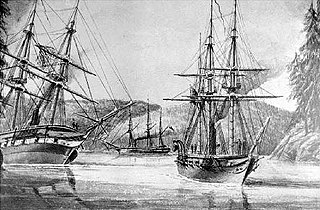
HMS Plumper was part of the 1847 programme, she was ordered on the 25 of April as a steam schooner from Woolwich Dockyard with the name Pincher. However, the reference Ships of the Royal Navy, by J.J. College, (c) 2020 there is no entry that associates this name to this build. The vessel was reordered on August 12 as an 8-gun sloop as designed by John Fincham, Master Shipwright at Portsmouth. Launched in 1848, she served three commissions, firstly on the West Indies and North American Station, then on the West Africa Station and finally in the Pacific Station. It was during her last commission as a survey ship that she left her most enduring legacy; in charting the west coast of British Columbia she left her name and those of her ship's company scattered across the charts of the region. She paid off for the last time in 1861 and was finally sold for breaking up in 1865.
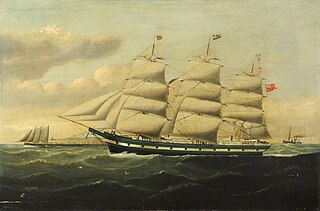
HMSEurydice was a 26-gun Royal Navy corvette which was the victim of one of Britain's worst peacetime naval disasters when she sank in 1878.
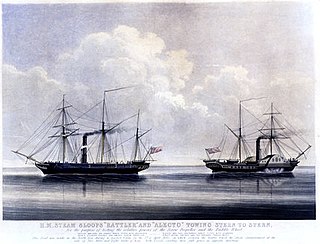
HMS Rattler was a 9-gun steam screw sloop of the Royal Navy, and one of the first British warships to be completed with screw propulsion. She was originally ordered as a paddle wheel 4-gun steam vessel from Sheerness Dockyard on 12 March 1841. She was reordered on 24 February 1842 as a propeller type 9-gun sloop from HM Royal Dockyard, Sheerness, as a new vessel. William Symonds had redesigned the ship as a screw propeller driven vessel.
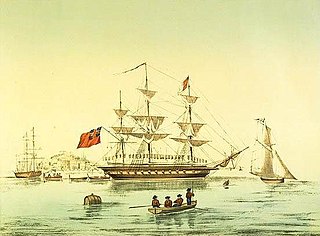
HMS Fly was an 18-gun sloop of the Royal Navy. She was responsible for the exploration and charting of much of Australia's north-east coast and nearby islands. She was converted to a coal hulk in 1855 and broken up in 1903.
HMS Highflyer was a 21-gun wooden screw frigate of the Royal Navy. She was built on the River Thames by C J Mare and launched on 13 August 1851. She spent twenty years in service, including action in the Crimean War and the Second Opium War, before being broken up at Portsmouth in May 1871.

The Cruizer class was a class of six 17-gun wooden screw sloops built for the Royal Navy between 1852 and 1856.

HMS Winchester was a 60-gun Southampton-class sailing frigate of the Royal Navy. She was laid down in 1816 at Woolwich Dockyard, and launched on 21 June 1822. Although designed for 60 guns, she and the rest of the class carried 52 guns. From 1831 to 1861 she served in North America and Southeast Asia. In 1861 she became the training ship Conway at Liverpool, and from 1876 she was the training ship Mount Edgcumbe. She was sold in 1921.
HMS North Star was a 28-gun Atholl-class sixth-rate post ship built to an 1817 design by the Surveyors of the Navy. She was launched in 1824. North Star Bay, a bay in Greenland, was named in honour of this ship.

HMS Encounter was ordered as a First-Class Sloop with screw propulsion on 5 February 1845 to be built at Pembroke, in accordance with the design developed by John Fincham, Master Shipwright at Portsmouth. Her armament was to consist of 8 guns. She was to have a more powerful steam engine rated at 360 nominal horsepower. In 1848 she would be altered abaft and lengthened at Deptford prior to completion. A second vessel (Harrier) was ordered on 26 March 1846 but after her keel was laid at Pembroke Dockyard, her construction was suspended on 9 September 1846 then cancelled five years later, on 4 April 1851. Encounter had her armament radically altered in 1850 and she was broken up at Devonport in 1866.
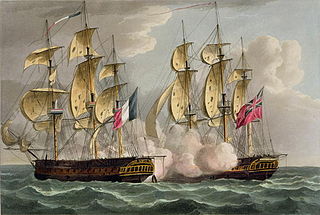
Résistance was a 48-gun Vengeance-class frigate of the French Navy. HMS St Fiorenzo captured her in 1797 and the Royal Navy took her into service as HMS Fisgard. She was sold in 1814.
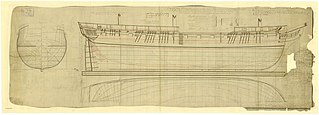
HMS Barrosa was launched in 1812 for the Royal Navy and served during the War of 1812 during which she captured several prices. After the war she spent a decade or so (1823–1833) on harbour duties. The navy sold Barrosa in 1841.
Royal George was launched in 1803 as a brig for the Revenue Service. The Royal Navy purchased her in 1806 and renamed her HMS Bustard. She served on active duty between 1808 and 1815, distinguishing herself in operations in the Mediterranean. She then sailed to the West Indies. The Royal Navy sold her in 1815 and she became the whaler Royal George. She made three whaling voyages and was lost in 1825 on her fourth.

HMS Wasp was an Archer type sloop ordered on 25 April 1847 from Deptford Dockyard. Two references stipulate that Parthian, ordered with Archer the year prior was renamed Wasp when ordered as a sloop. However, Parthian remained on the books at Deptford, as a Rifleman type gunvessel until cancelled in June 1849. Therefore Wasp was a new build. She served on many different stations during her career, including West Coast of Africa, in the Mediterranean and Black Sea during the Russian War of 1854 - 55, on the South East Coast of America, Cape of Good Hope where she went aground twice and the East Indies before being sold for breaking in December 1869.
HMS Medea was one of the initial steam-powered vessels built for the Royal Navy. On 10 January 1831 the new First Lord Sir James Graham, 2nd Baronet gave orders that four paddle vessels be built to competitive designs. The vessels were to be powered by Maudslay, Son & Field steam engines, carry a schooner rig and mount one or two 10-inch shell guns. Initially classed simply as a steam vessel (SV), she was re-classed as a second-class steam sloop when that categorization was introduced on 31 May 1844. Designed by Oliver Lang, the master shipwright of Woolwich. She was launched and completed in 1834, took part in the Syrian Coast Campaign and was broken up in 1867.

HMS Racer was a 16-gun Racer-class brig-sloop of the Royal Navy. Commissioned in 1833 she served on the North America and West Indies Station where she was badly damaged by what became known as Racer's hurricane in 1837. After repair at Havana she returned to England where she was paid off. Racer was recommissioned later in 1838 and returned to North America where, in 1840, her commanding officer was drowned in an accident. She was refitted in 1842 and served on the South America Station and on anti-slavery patrols off West Africa. An 1848 refit reduced her to 12 guns and she afterwards served as a tender to HMS Caledonia and in the Mediterranean Sea. Racer was sold out of service in 1852.














